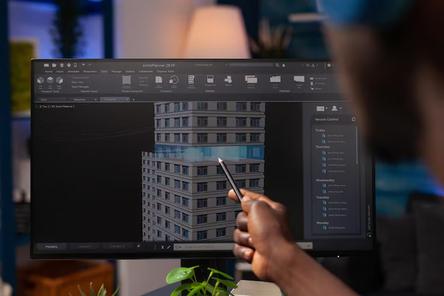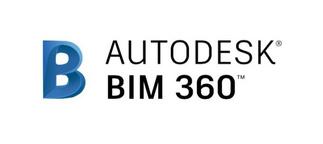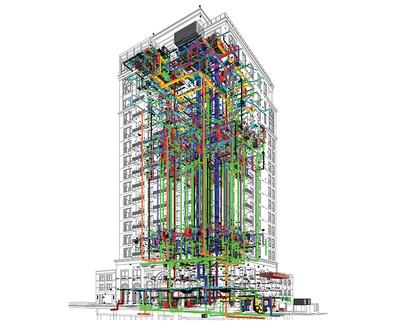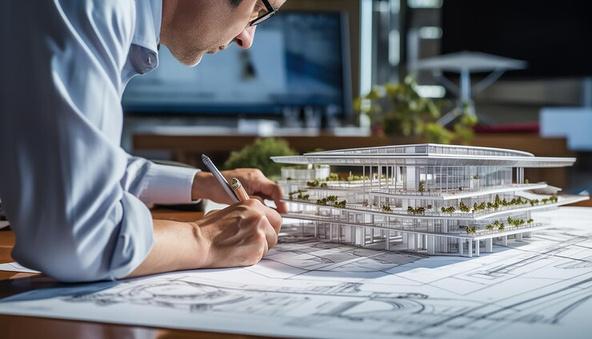BuildingInformationModeling(BIM) Standard&Guide





Building Information Modeling (BIM) is a digital representation of a building's physical and functional characteristics. It is a technologydriven process that involves creating and managing digital models of a construction project. These models encompass every aspect of the building, including its design, construction, and operation.
BIM has revolutionized the construction industry by improving collaboration, reducing errors, and enhancing project efficiency.

BIM offers a multitude of benefits, including:
Improved Collaboration: BIM facilitates collaboration among architects, engineers, contractors, and other stakeholders. It enables real-time sharing of project information, reducing misunderstandings and conflicts.


Enhan 3D and 4D 4D and 5D
BIM Cost Estimation visualization of a project. This aids in better understanding and decision-making.
Cost ify and rectif project, reducing costly rework. It also helps in accurate scheduling leading to on-time project comp


Susta design and the envir hoices, mat i l d ti
Faci be used for y g g efficient operation and maintenance of buildings.

To ensure uniformity and interoperability in BIM projects, various standards and guidelines have been developed:
ISO 19650: An international standard for BIM that establishes principles for information management across the project life cycle.
National BIM Standards: Many countries have developed their own BIM standards and guidelines to suit local construction practices and regulations.
U.S General Services Administration BIM Guides (GSA): US GSA produced the BIM Guide Series to share our learning experiences with project teams, including GSA employees and design and construction contractors. The BIM Guide Series also provides guidelines and standards for new project teams, ensuring that GSA projects use BIM in the most beneficial, efficient way possible from the start.
Industry-Specific Standards: Some industries, such as architecture, engineering, and construction, have specific BIM standards tailored to their needs.




OpenBIM: Advocates for open standards and interoperability, allowing different software tools to exchange BIM data seamlessly.




Successfully implementing BIM in projects involves the following steps:
Project Planning: Define BIM goals, roles, responsibilities, and software tools to be used.

Model Development: Create a BIM model that represents the project accurately.
Collaboration: Facilitate collaboration among project stakeholders using BIM, ensuring everyone has access to the latest data.

Data Management: Establish protocols for data storage, retrieval, and sharing.
Training: Train project team members in BIM tools and workflows.
Quality Control: Implement processes to check the quality and accuracy of BIM models.



A variety of BIM software and tools are available, catering to different project needs and budgets. Some popular options include:

Autodesk Revit: Widely used for architectural design and construction.


ArchiCAD: Known for its architectural modeling capabilities.

Navisworks: Used for clash detection and coordination in large projects.
BIM 360: A cloud-based platform for project management and collaboration.
SketchUp: Known for its user-friendly 3D modeling capabilities.

To maximize the benefits of BIM, consider the following best practices:
Early Involvement: Involve BIM experts from the project's inception.
Clear Communication: Establish clear communication channels among team members.
Data Standards: Adhere to data standards to ensure consistency.
Regular Updates: Keep BIM models up-to-date with project changes.
Continuous Training: Invest in ongoing training to stay updated with BIM advancements.




Explore real-world examples of BIM success stories, showcasing how BIM has transformed projects across various industries. .



Building Information Modeling (BIM) is a transformative technology that has reshaped the construction industry. By adhering to standards and implementing best practices, BIM can streamline projects, improve collaboration, and deliver costeffective, sustainable buildings. Embracing BIM is not just a trend; it's a necessity for staying competitive in the modern construction landscape.
